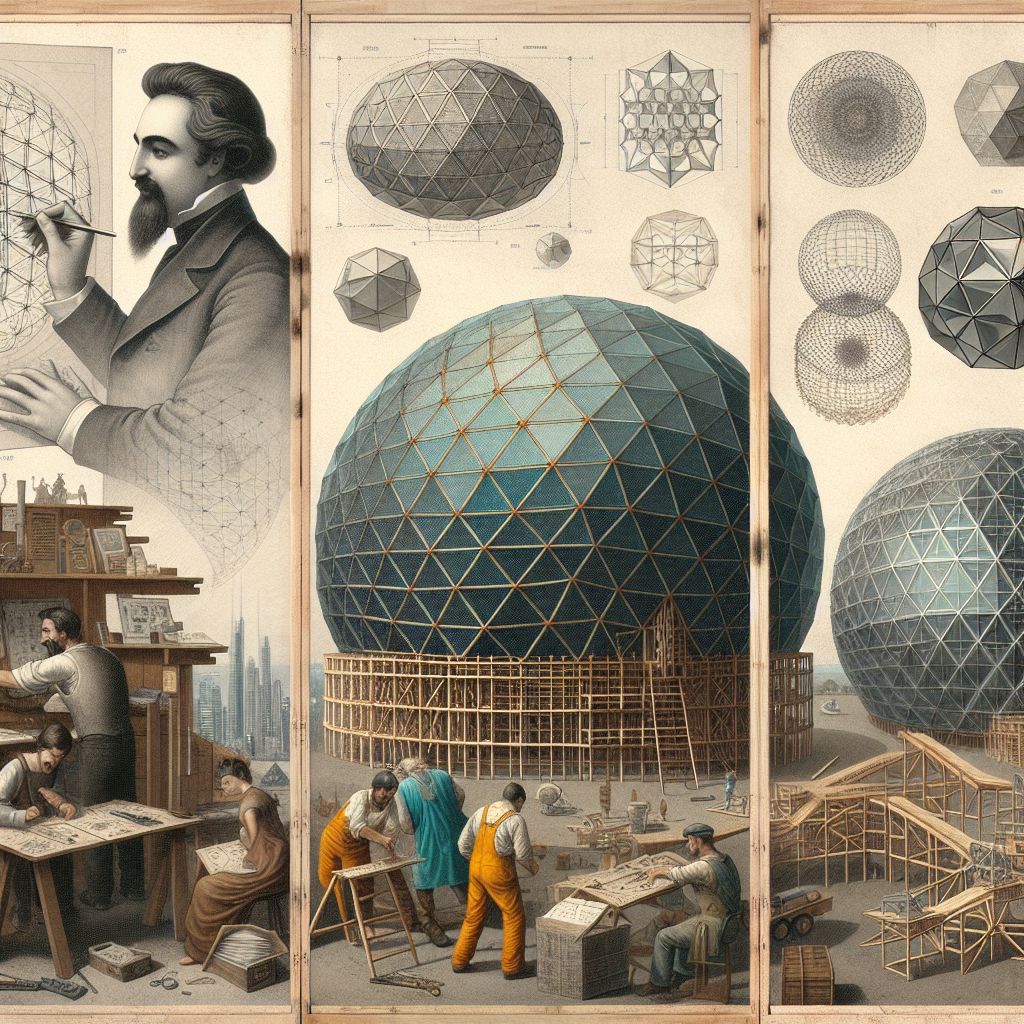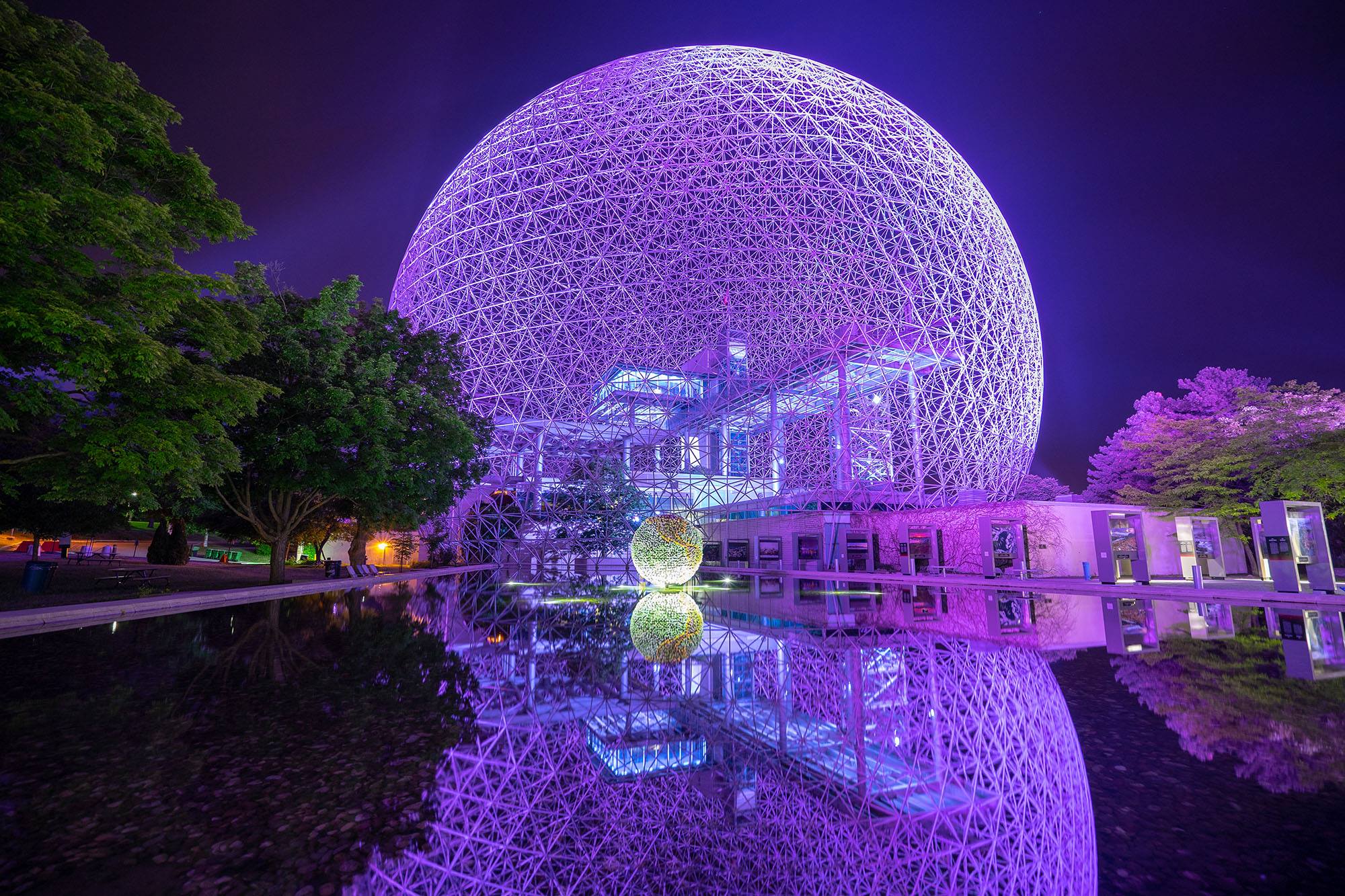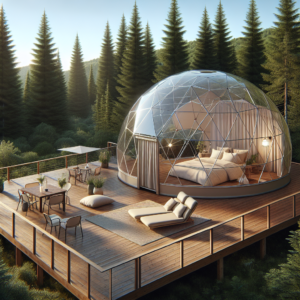
Key Takeaways
Geodesic domes are innovative architectural structures known for their strength, efficiency, and unique aesthetic.
The concept of the geodesic dome was popularized by R. Buckminster Fuller, although it was not his original invention.
The geometric design of geodesic domes allows for a stable and self-supporting structure that maximizes interior space while minimizing materials.
Geodesic domes have been utilized for a variety of purposes, from eco-friendly homes to exhibition spaces and emergency shelters.
With the rise of sustainable living and advancements in materials, geodesic domes are experiencing a resurgence in popularity.
Imagine a structure so futuristic yet rooted in a history of innovation, a space where form meets function in the most elegant way. That’s the world of geodesic domes, a type of architecture that not only captures the eye but also embodies efficiency and sustainability. Let’s dive into the history of these fascinating structures and explore their uses, inspiring you to think outside the traditional box of design.
Unlocking the Geodesic Dome: Past to Present
The story of geodesic domes is a tale of architectural evolution. At its core, the geodesic dome represents a leap in design, challenging conventional building methods with a shape that is both aesthetically pleasing and structurally sound. But how did this design come to be, and what makes it so special? Let’s unravel the mystery.
The Conceptual Leap: From Early Domes to Geodesic Innovation
Long before geodesic domes graced the landscape, domes themselves were not a novelty. Ancient civilizations like the Romans used domes to crown their buildings, valuing them for the sense of grandeur they imparted. Fast forward to the 20th century, and we see a significant shift with the introduction of geodesic principles.
The geodesic dome’s history began not with a bang but with a quest for efficiency. The concept was to create a structure that could do more with less—less material, less waste, and less energy consumption. This was achieved through a pattern of triangles that formed a self-supporting spherical surface. And thus, a new era of design was born.
The geodesic dome’s geometric pattern is a work of art and science, providing unmatched structural integrity and beauty.
Pioneers in Geodesic Design: Fuller’s Legacy
When we talk about geodesic domes, one name often springs to mind: R. Buckminster Fuller. While Fuller did not invent the geodesic dome, he was the one who saw its potential and brought it to the forefront of modern architecture. Fuller was a visionary who believed in “doing more with less,” and his work with geodesic domes became a testament to this philosophy.
Fuller’s dedication to innovation and sustainability.
His exploration of geodesic domes as a solution to post-war housing.
The patent he received for his geodesic dome design in 1954.
Fuller’s legacy is not just in the domes he built, but in the minds he inspired. His teachings and designs have influenced generations of architects, engineers, and dreamers to think differently about the spaces we inhabit.
Most importantly, Fuller’s work with geodesic domes was about more than just architecture; it was about a philosophy of life. He saw these structures as a means to address global challenges, from housing shortages to resource conservation. It’s a vision that continues to resonate today, as we seek more sustainable ways to live.
Structural Marvel: The Principles of Geodesic Design
Triangular Harmony: Strength in Geometry
The geodesic dome’s secret lies in its shape. The triangles that make up the dome are not just a design choice; they’re a masterstroke of engineering. Because of their geometric properties, triangles are incredibly stable. When they’re assembled into a dome, they distribute stress evenly throughout the structure, allowing it to withstand heavy loads and resist environmental forces like wind and snow. This means that with geodesic domes, you can create large, open spaces that need no internal supports, freeing you from the constraints of columns and beams.
Therefore, if you’re looking to create a space that’s both expansive and intimate, consider the geodesic dome. Its ability to span large areas without internal support makes it ideal for everything from sports arenas to concert halls, where unobstructed views are paramount.
The Sphere’s Secret: Efficiency and Sci-Fi Aesthetics
Beyond strength, the spherical shape of a geodesic dome offers unmatched efficiency. The dome’s surface area is minimal in relation to its volume, which means it requires less building material to enclose more space. This isn’t just good for your budget; it’s also good for the planet. With less material, there’s less waste, and the structure itself is more energy-efficient, retaining heat in the winter and staying cool in the summer.
But let’s not forget the aesthetics. There’s something undeniably futuristic about the look of a geodesic dome. It’s no wonder these structures often appear in science fiction; their otherworldly appearance suggests a forward-thinking mindset, a boldness in design that dares to break the mold.
Spanning the Globe: Geodesic Domes Around the World
Eco-Habitats: Domes in Sustainable Living
Geodesic domes have found a special place in the heart of the sustainability movement. Their energy efficiency and ability to use locally sourced materials make them a natural fit for those looking to reduce their carbon footprint. Moreover, the domes’ resilience to natural disasters has made them a popular choice for eco-communities, especially in areas prone to extreme weather.
Consider the benefits of a geodesic dome for your next project if sustainability is a priority. Its design aligns seamlessly with green building principles, making it a smart choice for the environmentally conscious builder.
Showstoppers: Domes in World Expos and Events

File photo of the Montreal Biosphere, a geodesic dome in Parc Jean-Drapeau on Île Sainte-Hélène. Montreal Biosphere Facebook page
Geodesic domes have a history of stealing the show at world expos and other large events. Their unique appearance and vast interior spaces make them ideal for exhibitions, where they can house large installations and crowds. The Montreal Biosphère, created for Expo 67, remains one of the most iconic geodesic domes, now serving as an environmental museum.
But the appeal of geodesic domes extends beyond their functionality. They embody the spirit of innovation and progress that expos celebrate, making them a symbol of human achievement and potential.
Montreal Biosphère’s enduring legacy as a symbol of Expo 67.
The use of geodesic domes in modern expos to captivate and inspire.
Besides that, when you’re looking to create a space that captures the imagination and embodies the cutting edge, a geodesic dome is an excellent choice. Its historical significance and futuristic appeal make it a powerful tool for storytelling and brand expression.
Inventing the Future: Geodesic Domes and Innovation
Material Matters: The Evolution of Dome Building Blocks
The materials used in constructing geodesic domes have evolved significantly over the years. Initially, metal and wood were the go-to choices, but today’s domes can be made from a variety of materials, including lightweight and durable composites, recycled plastics, and even inflatable fabrics for portable applications.
This evolution in materials has not only made geodesic domes more accessible but has also expanded their potential applications. With the right materials, domes can be tailored to suit any environment or purpose, from desert eco-resorts to Arctic research stations.
Tomorrow’s Shelter Today: Geodesic Domes in Space Exploration

Looking to the stars, geodesic domes have even been proposed for use in space exploration. Their structural integrity and efficient use of space make them an ideal choice for habitats on other planets. As we push the boundaries of human exploration, geodesic domes stand ready to provide shelter in the most inhospitable environments.
Imagine the possibilities as we expand our horizons beyond Earth. Geodesic domes could be the key to sustainable living on the Moon, Mars, and beyond, offering a slice of home in the vastness of space.
Bring the Dome Home: Practical Applications and DIY Domes
Glamping Under the Stars: Domes in Hospitality

Geodesic domes have also made their mark in the world of hospitality, particularly in the trend of glamping—glamorous camping. These domes provide a unique and luxurious outdoor experience, blending the beauty of nature with the comforts of home. With their panoramic windows and chic interiors, geodesic domes are transforming the way we think about retreats and resorts.
If you’re in the hospitality business, consider the allure of a geodesic dome for your next venture. It’s a stay your guests won’t soon forget, offering them a chance to connect with nature without sacrificing style or comfort.
Making It Your Own: Constructing a Backyard Geodesic Retreat
And it’s not just for the pros. Building your own geodesic dome is a project within reach for the ambitious DIYer. With a variety of kits and online resources available, you can create a personal haven in your backyard. Whether it’s a play area for the kids, a serene greenhouse, or a novel home office, a geodesic dome can be a versatile addition to your living space.
So roll up your sleeves and let your creativity take shape. A geodesic dome is a project that rewards you with a unique space that’s as functional as it is beautiful.
Frequently Asked Questions
What Is a Geodesic Dome Exactly?
A geodesic dome is a spherical structure made up of a network of triangles. The design is known for its strength, low material cost, and ability to cover wide spaces without internal supports. It’s a prime example of what’s called ‘tensegrity’ in architecture, a portmanteau of ‘tensional integrity.’
Why Are Geodesic Domes Known for Their Strength?
Their strength comes from the geometric arrangement of triangles, which evenly distributes stress across the structure. This makes geodesic domes capable of withstanding extreme weather and heavy loads, more so than many other types of structures.
Can Geodesic Domes Be Used as Homes?
Absolutely. Geodesic domes can be adapted for residential use, offering a unique and energy-efficient option for housing. They provide a spacious and light-filled living environment that’s both inspiring and practical.
What Kind of Materials Are Used in Modern Geodesic Domes?
Modern geodesic domes can be constructed from a variety of materials, including traditional wood and metal, as well as innovative options like high-tech plastics, composites, and even textiles for portable domes.
How Do Geodesic Domes Contribute to Sustainability?
Geodesic domes contribute to sustainability through their efficient use of materials and energy. Their design requires less building material for more space and is inherently more energy-efficient due to the reduced surface area exposed to the elements.
These features make geodesic domes an attractive option for those looking to build eco-friendly structures that are both innovative and functional. As we continue to seek out sustainable building solutions, the geodesic dome stands as a beacon of possibility, reminding us that the future of architecture is not only about creating spaces but also about preserving our planet.





Leave a Reply